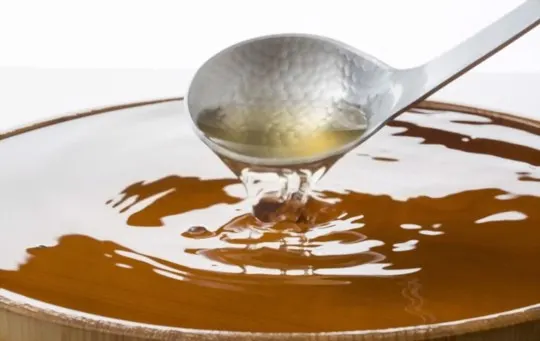Finding the perfect substitute for sake in your cooking can feel like a treasure hunt.
Sometimes, you just can’t grab a bottle from the store.
No sweat, we’ve got you covered with some killer alternatives.
Ever been in a pinch while whipping up your favorite Japanese dish?
We have. It’s a bummer realizing you’re out of sake.
Good news: other ingredients can save your meal.
Rice vinegar adds that tangy kick, while white wine brings a touch of elegance.
Got mirin? It’s sweeter, yet it does the trick.
And for those non-alcoholic options, lemon juice mixed with water works wonders.
These swaps ensure your culinary creations remain top-notch.
No need to halt your cooking spree.
Just grab one of these options and you’re golden.
What is Sake?

Sake, also called Nihon Shu, is a Japanese alcoholic beverage fermenting rice.
Sake can be classified into many different categories based on different factors such as the amount of alcohol content, taste, region it comes from, etc.
Each category has its own specific brewing process that helps to create its unique flavor.
Sake is commonly served warm, but it is also delicious cold.
Sake goes great with Japanese dishes such as sushi and sashimi or can be enjoyed on its own.
The unique flavor of sake makes it a worthwhile beverage to try and explore.
When cooking with sake, the flavor from the sake enhances the flavors from the other ingredients in a dish.
It’s clear that sake offers a unique flavor, but what does it taste like? Sake can have a variety of flavors depending on the region it comes from, brewery, etc.
Some examples are fruity or sweet, while others have a distinct or rich aroma.
However, sake’s flavor is not as simple as one-note.
The taste changes depending on how it is served and what it is paired with.
To fully discover sake’s unique flavor, try serving it in different ways and tasting all the different types to see which ones you like.
The 5 Best Substitutes for Sake
Sake is a traditional Japanese rice wine known for its distinct flavors and versatility in cooking.
However, if you don’t have sake on hand or want to explore alternatives, there are several substitutes available.
In this guide, we will compare the top 5 substitutes for sake, discussing their key characteristics and suggesting proper ratios to help you achieve similar results in your recipes.
| Substitute | Key Characteristics | Proper Ratio |
|---|---|---|
| Mirin | Sweet rice wine with a lower alcohol content; adds a delicate sweetness and umami flavor to dishes | Use an equal amount of mirin as a substitute for sake |
| Chinese Rice Wine | Traditional Chinese rice wine with a similar flavor profile to sake; can be used interchangeably | Use an equal amount of Chinese rice wine as a substitute for sake |
| Sherry | Fortified wine with a nutty and sweet flavor; brings complexity to dishes | Use an equal amount of sherry as a substitute for sake |
| Dry Vermouth | Dry white wine fortified with herbs and botanicals; adds depth to recipes | Use an equal amount of dry vermouth as a substitute for sake |
| White Wine | General-purpose wine with various flavor profiles; provides acidity and can enhance flavors | Use an equal amount of white wine as a substitute for sake |
Now let’s dive into each substitute in more detail:
1 – Mirin

Mirin is a Japanese cooking wine that can be substituted forsake when cooking.
It’s a very sweet, low alcohol rice wine similar to sake.
However, Mirin has a lower alcoholic content and sugar content than sake.
It contains about 1 – 3% alcohol content.
The flavor of Mirin is a balance between salty and sweet.
This makes it a great substitute for sake because sake also has a slightly salty flavor.
However, there are some differences between these two ingredients.
First, Mirin typically has a higher sugar content than sake does.
Furthermore, the flavor of the final dish will vary depending on whether or not Mirin is used.
Compared to sake, Mirin produces a mellow, more subtle flavor.
- Key Characteristics: Mirin is a sweet rice wine with a lower alcohol content than sake. It adds a delicate sweetness and umami flavor to dishes. Mirin is commonly used in Japanese cuisine.
- Proper Ratio: Use an equal amount of mirin as a substitute for sake. Adjust the quantity based on your recipe requirements and desired level of sweetness.
2 – Chinese Rice Wine

Chinese rice wine can be substituted forsake.
However, it’s important to know that Chinese rice wine has a slightly different flavor than Japanese sake.
Also known as Shaoxing wine, it is an alcoholic beverage brewed from rice in China.
This rice wine is most commonly used in cooking and rarely consumed on its own.
Chinese rice wine is best used in Asian dishes.
This rice wine has a nutty and aromatic flavor compared to the more salty and savory taste of sake.
Furthermore, this rice wine contains 15% to 25% alcohol content, much higher than sake’s 10%.
This makes it perfect for enhancing the flavor in any dish.
- Key Characteristics: Chinese rice wine is a traditional wine with a similar flavor profile to sake. It can be used interchangeably in recipes, especially when preparing Asian dishes.
- Proper Ratio: Use an equal amount of Chinese rice wine as a substitute for sake. Adjust the quantity based on your recipe requirements and desired flavor intensity.
3 – Sherry

Sherry is the best substitute forsake when it comes to Western dishes.
The alcohol content of both these ingredients is comparable, and sherry also has a nutty flavor.
This wine typically has an amber color with strong flavors.
The main flavor present in Japanese rice wine, sake, and Spanish sherry is nuts.
This is why they work so effectively as a substitute for one another.
In addition, both sake and sherry have a high viscosity level compared to wines.
That being said, sherry can be substituted in any recipe that calls forsake.
- Key Characteristics: Sherry is a fortified wine with a nutty and sweet flavor. While distinct from sake, it can bring complexity and richness to recipes, making it a viable substitute.
- Proper Ratio: Use an equal amount of sherry as a substitute for sake. Adjust the quantity based on your recipe requirements and desired depth of flavor.
4 – Dry Vermouth

Dry vermouth can be substituted forsake.
This wine does have a different flavor than sake.
However, dry vermouth is used similarly to sake, and it has an alcohol content comparable to rice wine.
Like sherry and Mirin, dry vermouth is a fortified white or rosé wine – usually around 17% to 18% alcohol content.
It produces a dry flavor and a slightly spicy or fruity aroma.
When using this substitute, make sure you pick up the dry one.
Sweet vermouth does not work well in place of sake because it will produce a very different flavor in your dish.
- Key Characteristics: Dry vermouth is a dry white wine fortified with herbs and botanicals. Although different from sake, it can add depth and complexity to recipes, particularly in savory dishes.
- Proper Ratio: Use an equal amount of dry vermouth as a substitute for sake. Adjust the quantity based on your recipe requirements and desired flavor profile.
5 – White Wine

Almost any white wine can be substituted forsake.
It’s important to remember that the key is finding a wine that you enjoy drinking, so you know it will taste good in your dish too.
White wines are typically dry with an earthy flavor.
With this substitute, one thing to keep in mind is that substituting wines means changing the flavor of your dish.
This is because not all white wines are the same.
Also, substitute with caution – some people may be sensitive or allergic to sulfites in wine.
Sulfites are naturally-occurring chemicals found in many fruits and vegetables.
They’re used as a preservative in winemaking to keep the fresh flavor of the grapes when the grape skins are broken and exposed to air.
- Key Characteristics: White wine is a general-purpose wine with various flavor profiles. It provides acidity and can enhance flavors in recipes. While not identical to sake, it can be a suitable alternative.
- Proper Ratio: Use an equal amount of white wine as a substitute for sake. Adjust the quantity based on your recipe requirements and desired level of acidity.
Conclusion
Sake is a traditional Japanese alcoholic beverage made from fermented rice.
Finding a proper substitute for sake can be difficult because it is such an integral ingredient in Japanese cooking.
Sake has a slightly salty flavor that other wines don’t have.
This means that the final dish will taste slightly different depending on which ingredients you use as a substitute.
Always look for substitutes with comparable alcoholic content and similar viscosity.
This will ensure that your dish tastes as close to the original as possible.

The 5 Best Substitutes for Sake
Ingredients
- Mirin
- Chinese Rice Wine
- Sherry
- Dry Vermouth
- White Wine
Instructions
- Pick your favorite substitute from the list above.
- Follow cooking directions for your selected substitute with the proper ratio of ingredients.

Andrew Gray is a seasoned food writer and blogger with a wealth of experience in the restaurant and catering industries. With a passion for all things delicious, Andrew has honed his culinary expertise through his work as a personal chef and caterer.
His love for food led him to venture into food writing, where he has contributed to various online publications, sharing his knowledge and insights on the culinary world. As the proud owner of AmericasRestaurant.com, Andrew covers a wide range of topics, including recipes, restaurant reviews, product recommendations, and culinary tips.
Through his website, he aims to inspire and educate fellow food enthusiasts, offering a comprehensive resource for all things food-related.

Leave a comment